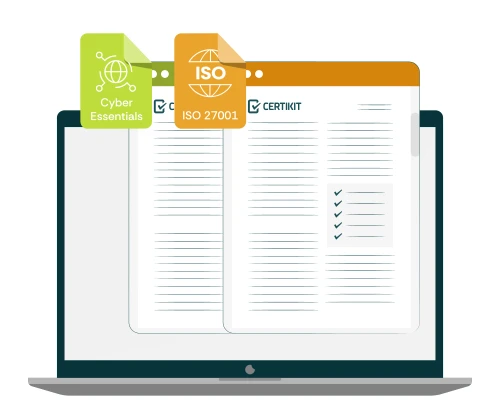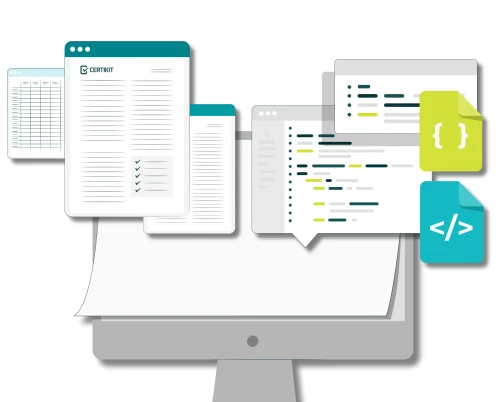Complying with legislation is an important requirement of the ISO45001 standard for an Occupational Health and Safety Management System. The standard mentions legal requirements several times including in the OH&S Policy, and in clause 6.1.3 – Determination of legal requirements and other requirements.
To assist UK organisations, we’ve provided an overview of some of the main pieces of legislation. This legislation can apply to any business regardless of size or sector, and it’s up to you to assess what applies and how it will impact your business.
So, let’s look at the current health and safety legislation in the UK.
The current UK Health and Safety Legislation
The main pieces of legislation dealing with different aspects of health and safety are the Health and Safety at Work, etc Act 1974 and the Management of Health and Safety at Work Regulations 1999. These two set the standards for all health and safety in the UK workplace.
Besides these two, which are the foundation of Health and Safety at Work, there are others to consider too. These include:
Workplace (Health, Safety and Welfare) Regulations 1992
The Health and Safety (Display Screen Equipment) Regulations 1992
The Manual Handling Operations Regulations 1992 amended 2002
The Regulatory Reform (Fire Safety) Order 2005
RIDDOR (Reporting of Injuries, Diseases and Dangerous Occurrences Regulations 1995)
The Personal Protective Equipment at Work Regulations 1992
COSHH (Control of Substances Hazardous to Health) 2002
The Provision and Use of Work Equipment Regulations 1998 (PUWER)
The Working Time Regulations 1998
Health and Safety at Work etc Act 1974
The Health and Safety at Work etc Act 1974, also know as HASAWA or HSW, forms the basis for health and safety legislation that relates to the workspace. It contains most health and safety legislation within it. It places the duty on the employers to be responsible for the health and safety of their employees at work ‘as far as is reasonably practicable.’
It should be noted that employees also have responsibilities to the extent that they:
Take care of their own health and safety and that of the other employees
Do not interfere with any health and safety equipment
Cooperate with the employers
Management of Health and Safety at Work Regulations 1999
The Management of Health and Safety at Work Regulations 1999, also known as ‘Management Regs’, places a requirement on employers to assess and manage risk within the workspace and take relevant actions to reduce or eliminate risks. There are also requirements for employee awareness of health and safety and to have a Health and Safety Policy in place.
Other UK Health and Safety Legislation to consider
These legislations cover other areas in more detail within the remit of Health and Safety within the workspace, such as protection for users who habitually use display screen equipment (DSE) or a workspace; manual handling, which includes lifting, lowering, pushing, pulling, or carrying goods, equipment etc.
RIDDOR (Reporting of Injuries, Diseases and Dangerous Occurrences Regulations 1995)
There is also legislation on reporting incidents. This is covered in RIDDOR (Reporting of Injuries, Diseases and Dangerous Occurrences Regulations 1995). This is applied if there is a dangerous incident, injury, accident, or disease if the occurrence is related to work.
Personal Protective Equipment at Work Regulations 1992
This leads nicely into the regulations for Personal Protective Equipment (PPE). This is the Personal Protective Equipment at Work Regulations 1992. If there are risks to health and safety that cannot be adequately controlled in other ways, the employers have a duty to provide workers with PPE at work to protect employees against those health and safety risks.
Control of Substances Hazardous to Health 2002
Generally, PPE is seen when there are hazardous substances in use, and there is a regulation in place for the control hazardous substances. This is the Control of Substances Hazardous to Health 2002, also known as COSHH. It requires that the employers control the use, storage and transport of any substance that could be harmful to the health of employees.
Provision and Use of Work Equipment Regulations 1998
Should your business have equipment that is used in the workspace, there are regulations that covers this. The Provision and Use of Work Equipment Regulations 1998, known as PUWER, places responsibilities on businesses and organisations to ensure any equipment provided or used is suitable, safe and maintained, and that the users are properly training or supervised and emergency measures, such as signage and emergency stop buttons are in place.
Keeping up to date with legislation
These are some of the regulatory requirements that must be met in the workspace, so it is important that all legal requirements are interpreted correctly, implemented fully, and maintained. Also remember, legislation can change, so it is critical that this is monitored, and any changes are incorporated into your management process, and employees are made aware of those changes and what they entail.
In the UK, the Health and Safety Executive (HSE) provide advice, information, and guidance on health and safety in the workplace. Their website linked above is a great place to find the latest information about workplace safety.
Remember, legislation is there to protect both the employees and the employers, to ensure that the workspace is a safe environment, and that safety protocols and measures are in place.






